Monarda is a genus of annuals and herbaceous perennials from prairies and woodlands in North America. Some monardas are called bee balm and features bright flowers. Genus name honors Nicholas Monardes (1493-1588), physician and botanist of Seville.
The name bee balm derives from the plant’s value in attracting native bees, butterflies and bumblebees, and from common folklore that the crushed leaves could be applied topically to soothe bee stings.
Bee balm is also commonly called bergamot horsemint or Oswego tea, referring to the indigenous peoples of New York, who used the leaves to make medicinal tea. Depending on species, monardas are hardy in USDA plant hardiness zones 4 through 9.
Bee balm grows up to 4 feet tall with an upright habit and square stems that are hairy and somewhat aromatic. The leaves are dark green, toothed and pointed. The flowers can be pink, purple, red or white. In shape the flowers are tubular with a slightly curved lower lip.
Here are the different types of bee balm. Both the traditional (wild) and newer hybrid types. Their appearance, growth habits and flowering characteristics.
List of Bee balms
Traditional Varieties
- Scarlet bee balm (Monarda didyma)
- Spotted bee balm (Monarda punctata)
- Wild bergamot (Monarda Fistulosa)
- Lemon bee balm (Monarda citriodora)
- Basil bee balm (Monarda clinopodia)
- Purple Bergamot (Monarda media)
- Bradbury’s beebalm (Monarda bradburiana)
- Russell’s bee balm (Monarda russeliana)
New Hybrid Varieties
- Monarda ‘Fireball’
- Monarda ‘Blue Moon’
- Monarda ‘Balmy Lilac’
- Monarda ‘Leading lady Orchid’
- Monarda ‘Petite Delight’
- Monarda ‘Gardenview Scarlet’
- Monarda ‘Cherry Pops’
- Monarda ‘Grape Gumball’
- Monarda ‘Scorpion’
Old/Traditional Varieties
Scarlet bee balm (Monarda didyma)
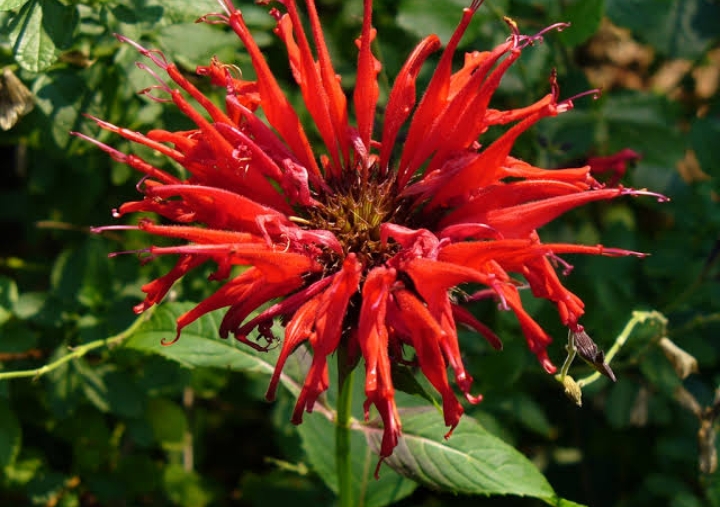
Scarlet bee balm also referred to as crimson bee balm occurs naturally in bottomlands and along stream banks. It produces clusters of scarlet-red flowers borne in dense globular terminal heads. The flowers are aromatic and blooms for about 8 weeks in the late spring to mid-fall.
This bee balm is a good companion plant for vegetables such as tomatoes and peppers. It can be propagated by seed or by division. Seed germination is usually good, but it can be slow. The plants can be divided in the spring or fall.
It occurs from Maine west to Ontario and Minnesota, and south to northern Georgia.
Spotted Bee balm (Monarda punctata)
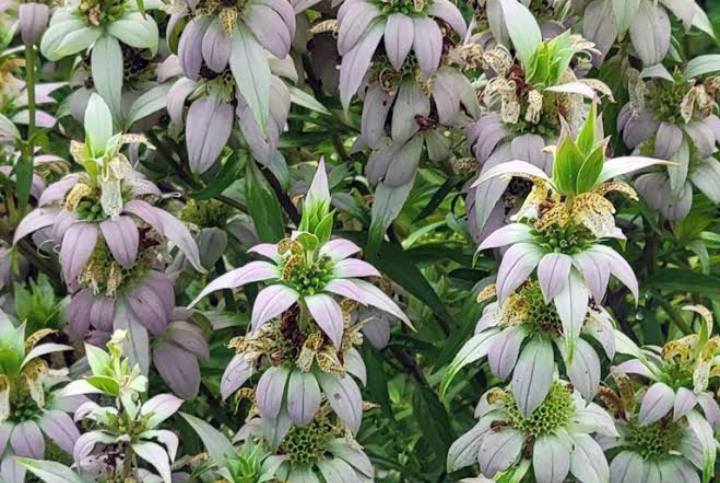
Monarda punctata, also known as spotted bee balm has tubular flowers that are borne in whorls on the upper stems. The flowers are yellow with purple spots.
Spotted Bee balm, unlike most other Monarda species, has flowers that are stacked up the stem, with bracts radiating from the stem under each flower. The bracts can be light pink to white.
The plant can be propagated by seed or by dividing clumps in the spring or fall. In the garden, this bee balm can be paired with other aromatic herbs and plants, such as lavender, thyme and sage.
It is found throughout much of the eastern and central regions of the United States, from Maine to Florida and westward to the Great Plains.
Wild bergamot (Monarda fistulosa)

Wild bergamot often grows in rich soils in dry fields, thickets, and clearings, usually on limy soil. The flowers are borne in whorls on the upper stems. The flowers are usually two-lipped in shape and can be lavender or pink. The plants generally flower from June to September.
It can be a good flower for front yard flower garden because it is able to bloom during a time of year when not much else is blooming. Often, the flowers will somewhat appear ragged, and should be deadheaded promptly to prolong the blooming period.
In home gardens, plant it alongside other tall, upright perennials, such as Russian sage or tall phlox, or alongside other native plants, such as coneflowers, black-eyed susans and goldenrod.
It can be found from Quebec in the north to the Northwest Territories and British Columbia, and south to Georgia, Texas, Arizona, Idaho and northeastern Washington.
Also Read: Different Types of Floribunda Roses
Lemon bee balm (Monarda citriodora)
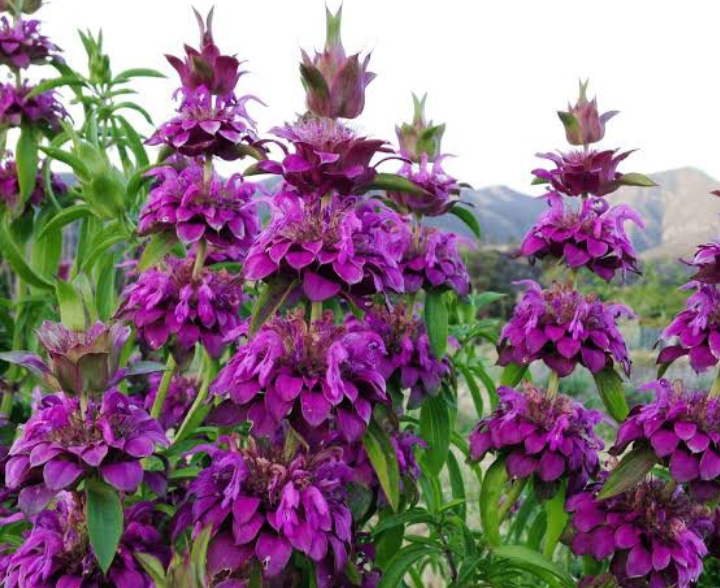
Lemon bee balm grows up to 3 feet tall. The flowers are lavender to pink, and are borne in tiered, globular clusters around the stem. They bloom for weeks from late spring to mid-summer.
The leaves of the plant give off a strong citrus or lemony scent when rubbed or crushed, which is why it is referred to as lemon mint. The leaves release a citrus or lemony scent when rubbed or crushed.
The flowers of Lemon bee balm may subjectively appear not beautiful, but they too have a pleasant lemon scent that is noticeable when you get close to the plant.
Lemon bee balm is a short-lived perennial and is also clump-forming with stiff square stems. The plant can also be propagated by seed or by dividing clumps in the spring or fall.
This bee balm is commonly found in the southern and central regions of the United States, Mexico, and Canada.
Basil bee balm (Monarda clinopodia)
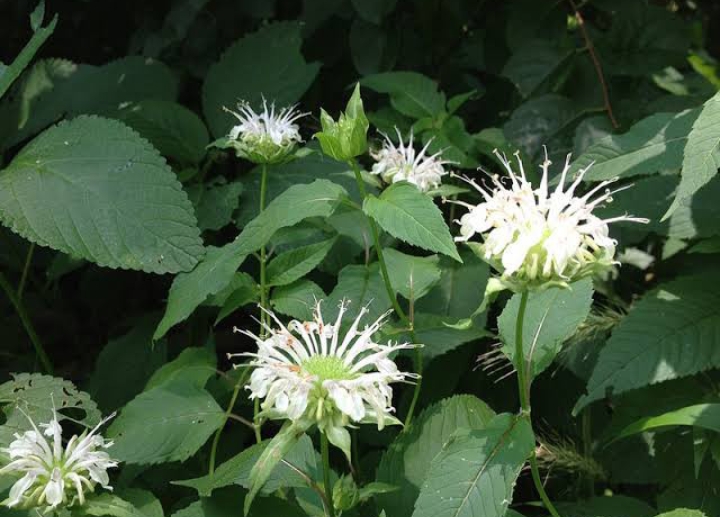
Basil bee balm also referred to as white bergamot, basil bee balm or white bee balm has its flowers arranged in dense, terminal clusters or “heads,” that are somehow spherical in shape. Each flower head is composed of many small, tubular flowers that are packed together and surrounded by leafy bracts.
According to North Carolina State University Cooperative Extension, the basil bee balm can be a good garden plant well from in USDA zones 4a to 9a. The plant is clump-forming with square stems, and generally requires division every two to three years to maintain the health of the plant.
Areas with tropical climates such as Florida and Hawaii, Basil bee balm can be a good companion plant for vegetables such as squash, tomatoes or Cauliflower because its fragrant foliage is reported to help repel insect pests, and its moplike flower head attract beneficial insects to the garden.
This bee balm can be found growing wild all the way north from New York, west to Missouri, and south to Georgia and Alabama. It can also be seen alongside roads in Vermont and Massachusetts.
Purple bergamot (Monarda media)
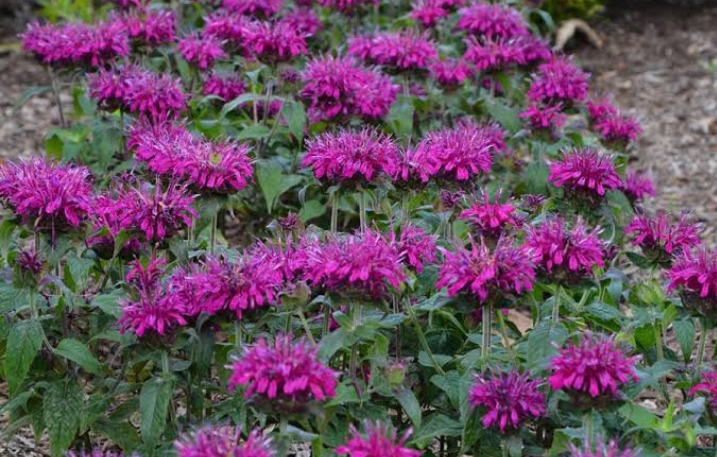
Monarda media known by the common name purple bergamot grows 2 to 4 feet tall, with pairs of long, narrow leaves continuing to grow opposite one another all the way up the stem. It is a rhizomatous plant that spreads by underground stems and can form large colonies.
The flowers are tubular and borne in terminal spikes or heads. The flower heads have many small individual flowers that are packed closely together. The outer flowers in the cluster are larger and showier, while the inner flowers are smaller and more inconspicuous. They bloom from late June through August and are a beautiful shade of purple-pink.
In a front yard garden or backyard, it can be planted alongside other herbs such as thyme, sage and lavender or other colorful perennials such as coneflowers and asters.
This bee balm can be found growing in USDA Hardiness Zones 4 to 8 in meadows, open woods and along the edges of forests.
Also Read: Yellow Lilies For Your Front Yard
Bradbury’s bee balm (Monarda bradburiana)
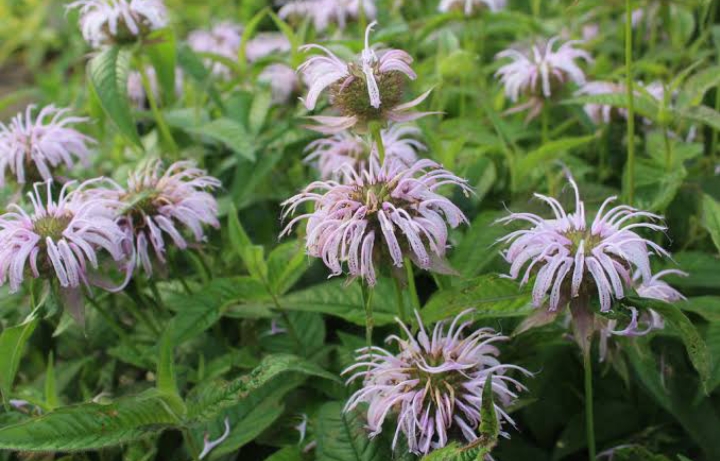
Bradbury’s bee balm also referred to as the eastern bee balm is named after the famous science fiction author Ray Bradbury, who was an avid supporter of environmental conservation and preservation.
Bradbury’s beebalm grows up to 60 cm tall. As with other types of bee balm, the flowers are tubular and are arranged in a flowerhead at the end of the stems. The flowerhead is cone-shaped at first and flattening out later with the central florets opening first. The florets are usually pink to lavender in color, but they can also be white.
Bradbury’s beebalm is a short-lived perennial, but it will often self-seed and come back year after year. The seed is a nutlet that can be dispersed by the wind, and the plant can also spread by vegetative growth from rhizomes.
According to University of Florida, this plant is specifically found in the Mississippi Valley regions, the states of Alabama, Arkansas, Iowa, Illinois, Indiana, Kansas, Kentucky, Louisiana, Missouri, Oklahoma, Tennessee and Texas, where its habitat is thickets, woodland edges, grassland and roadsides.
Russell’s bee balm (Monarda russeliana)
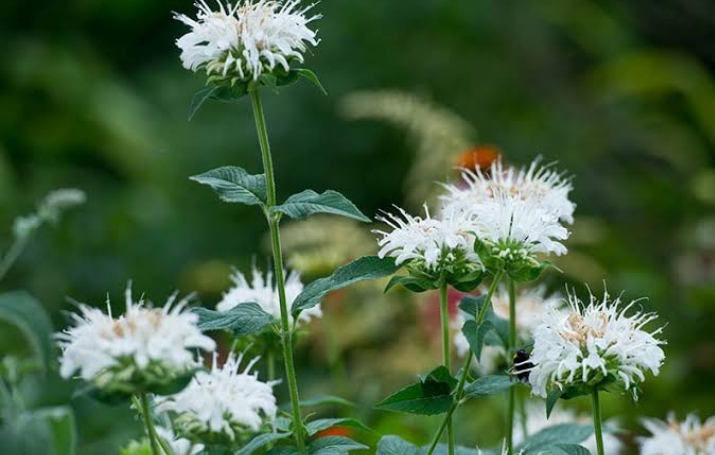
Russell’s bee balm was named after an English garden designer, James Russell (1920–1996) who was popular for use of perennials and his innovative planting schemes that incorporated bold color combinations and contrasting textures. {Source: University of Minnesota}.
Russell’s bee balm grows up to 90 cm tall. The flowers are tubular and grow in dense, terminal clusters at the top of the stem. Each flower has a two-lipped corolla that forms a protective cover over the reproductive organs. The flower is usually creamy white, but in some cases, it can be white with pink hues.
As the flowers fade, they leave behind small, round seed heads that can be left on the plant or collected for seed propagation. This plant is a short-lived perennial, but it will often self-seed and come back year after year. It can be propagated through seeds, division or stem cuttings.
It is deer-resistant and relatively pest and disease-free. The plant can work well for naturalized areas, cottage gardens and meadows.
According to University of Arkansas, it occurs from southern Illinois to Texas, with the Arkansas River drainage making up a big part of its range. It can also be found in the Appalachian Mountains and neighborhoods.
Hybrid Varieties
Most hybrid varieties of bee balm are derived from scarlet bee balm (Monarda didyma) and wild bergamot (Monarda fistulosa). Over decades, hybridization between these two species has produced an overwhelming number of cultivars for gardeners to choose from.
Monarda ‘Fireball’

This hybrid variety is compact in nature and just like the Monarda didyma, it bears whorls of scarlet-red flowers that appear in profusion. The flowers have fringy petals that almost seem to burst from the top of the bloom like a miniature firework display. This cultivar reportedly has good mildew resistance.
Also Read: Shrubs That Turn Red In Fall
Monarda ‘Blue Moon’
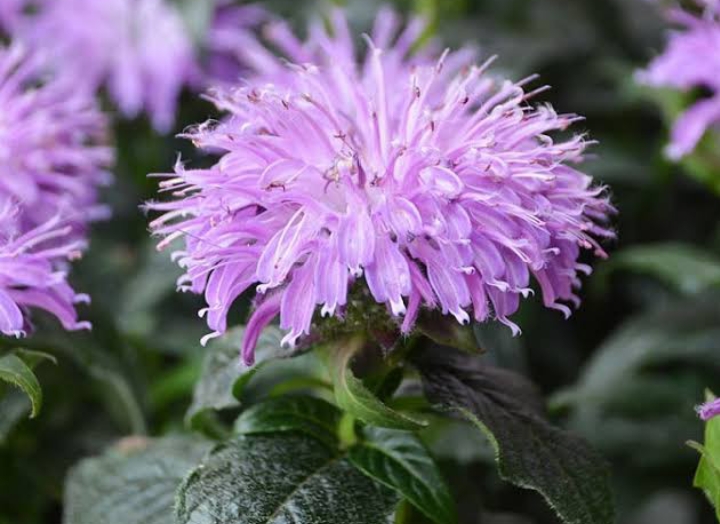
This is a compact variety that features lavender blue or violet blue flowers in dense clusters. It looks spectacular when planted en masse for a captivating border. It is also deer resistant and is low maintenance.
Monarda ‘Balmy Lilac’
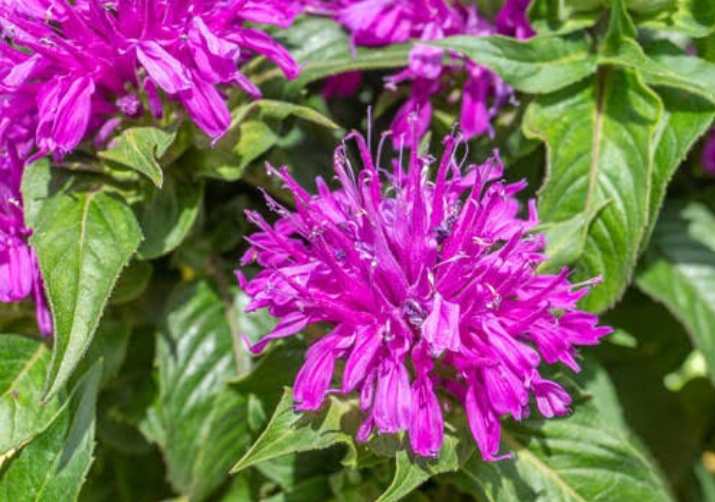
Monarda ‘Balmy Lilac’ is a cultivar of Monarda didyma and grows up to 18 inches in height. The flowers are in shade of lilac and bloom in mid-summer to early fall. It can be propagated by division or from seed. Division can be done in early spring or late fall when the plant is dormant, while seed sowing can be done in the spring after the last frost.
Monarda ‘Leading Lady Orchid’
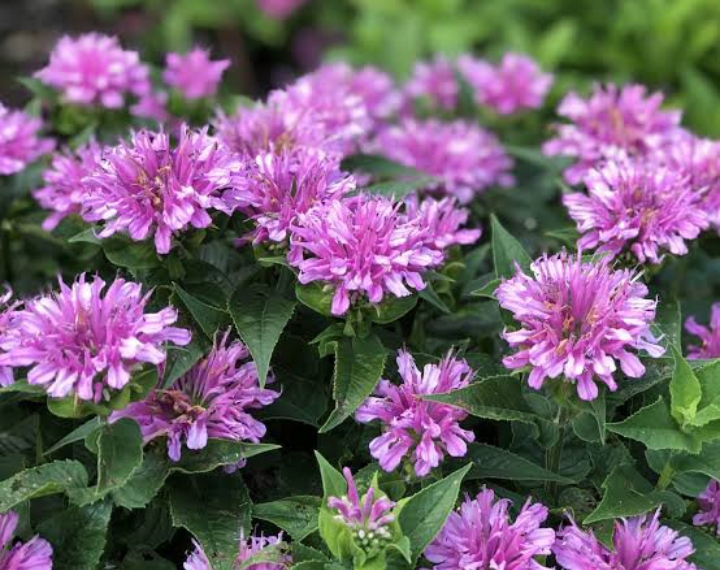
Leading lady orchid cultivar is dwarf in nature, clump forming and produces orchid pink flowers between June and August. It is its resistance to powdery mildew, a common fungal problem that affects many other Monarda cultivars. It is also drought tolerant and can be used in mixed borders, cottage gardens and perennial beds. It can also be grown in containers or used as a cut flower.
Monarda ‘Petite Delight’
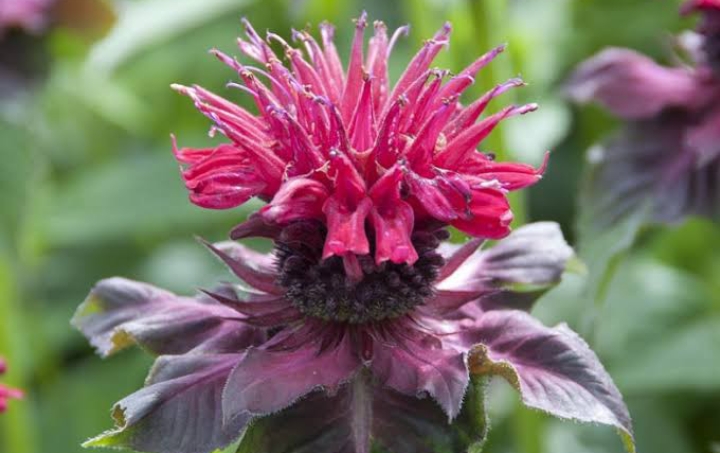
This cultivar is dwarf in its growth habit. It usually reaches 1 to 2 feet tall and is a vigorously spreading plant. The flowers are tubular, two-lipped, and arranged in dense, terminal clusters. They bloom from June to September and are pinkish-lavender in color or what some other call lavender-rose hues. As is with many monarda cultivars, it hardy and can be grown in USDA zones 4 to 9.
Monarda ‘Gardenview Scarlet’
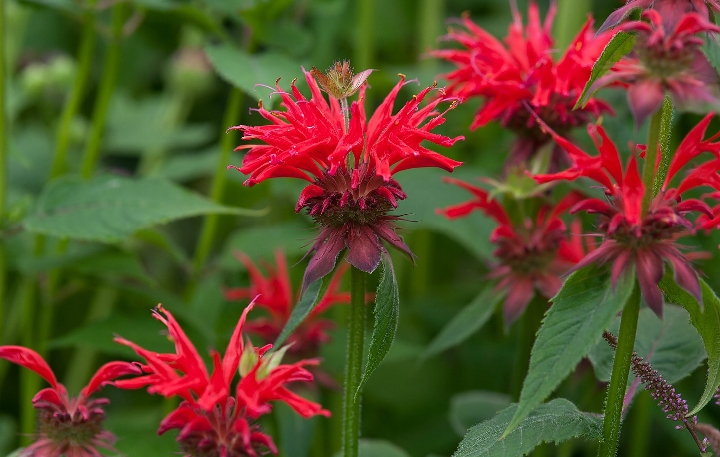
Monarda ‘Gardenview Scarlet’ grows to a height of 2 to 3 feet. It features tubular, scarlet-red or rose red flowers in dense, terminal heads (like unkempt mop-heads). Each flower head is surrounded by showy bracts that are pink or red-tinged. This cultivar can tolerate some drought but prefers regular watering. This cultivar is reported to have resistance to powdery mildew.
Monarda ‘Cherry Pops’

This particular cultivar was developed by Brent Horvath of Intrinsic Perennial Gardens in Hebron, Illinois, and was first introduced in 2011.
It features cherry-red flowers and grows up to 24 inches in height. With time, it forms a nice clump of well-branched stems and dark green foliage.
When grown in a home garde, it can pair well with other perennials like coneflowers, black-eyed Susans and ornamental grasses. After flowering this plant needs to be cut down to enhance growth of new shoots and leaves.
Monarda ‘Grape Gumball’
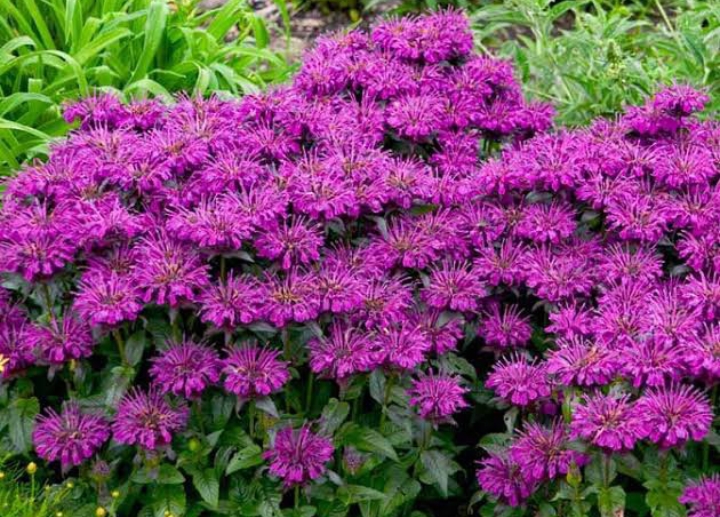
‘Grape Gumball’ is a new cultivar that was developed through a crossbreeding program by Dr. Jim Ault at the Chicago Botanic Garden. During summer, the blooms are a deep, rich shade of purple or what others call magenta. The flowers are shaped like small pom-poms and are densely clustered together on the end of each stem.
Unlike the wild monardas, this plant shows average resistant to powdery mildew. The best way to use this bee balm is as a pollinator plant. By planting it alongside other pollinator-friendly plants such as milkweed and Joe-Pye weed.
Monarda ‘Scorpion’

This cultivar was developed by plant breeder Jim Ault in the late 1990s at the Chicago Botanic Garden, and it was first introduced in 2002. The plant features masses of flower heads. Each bloom is composed of tubular, reddish purple flowers at the terminal end of the stems.
It is tolerant of both heat and humidity, and it can withstand mild drought once established. It is also fairly resistant to most pests and diseases when compared to older varieties.
This variety has a tendency to spread through rhizomes. If left unchecked, it can become invasive and difficult to control. When growing it in your fron yard or garden bed, you will need to divide the plant every few years and removing any unwanted growth.